As a seasoned acupuncturist, Jenny-Marie Greenough, LAc has spent years advocating for balanced nutrition and holistic wellness for her patients. Yet, despite her expertise, she often found herself searching for more effective and sustainable dietary interventions. It wasn't until she personally embarked on the journey of a fast-mimicking diet (FMD) that she truly understood its transformative potential. Intrigued by the scientific promise of FMD, which mimics the beneficial effects of fasting while still allowing for some food intake, Jenny-Marie decided to integrate it into her own lifestyle. The results were remarkable: enhanced energy levels, improved metabolic markers, and a newfound sense of vitality.
Inspired by her (and her husband’s!) own experience, she began to introduce FMD to her patients, witnessing firsthand the profound impact it could have on their health and well-being.
(Information provided courtesy of Prolon and L-Nutra Health)
What is FMD?
Prolon’s fast-mimicking diet (FMD) has emerged as a revolutionary approach that combines the advantages of fasting with the ease of regular eating.
Discovered and developed at the Longevity Institute of the University of Southern California, Prolon’s technology is plant-based nutrition that allows the body to enter into a beneficial fasting state without triggering the cells’ nutrient sensors. As the name suggests, it mimics fasting…while still allowing you to eat food. This nourished fasting fine-tunes cells, supports healthy aging, and eliminates the need to do a water-only starvation fast, which can have negative side effects.
By simulating the effects of traditional fasting while allowing for the consumption of carefully selected & clinically-tested, tasty, high-quality foods, Prolon’s FMD offers a sustainable and less restrictive path to wellness!
This innovative dietary strategy has been shown to promote weight loss, enhance metabolic health, reduce inflammation, and even support cellular rejuvenation. As a result, more people are turning to FMD to harness the profound health benefits of fasting without the hardships typically associated with prolonged periods of complete food abstinence, or the expense and potential side-effects of some prescription drugs.

How does FMD compare to GLP-1s Like Ozempic and Wegovy?
With the increasing popularity of GLP-1s like Ozempic and Wegovy, it's essential to understand the comparative benefits and limitations of these treatments. While GLP-1s can be lifesaving for some, they have been sorely over-prescribed, and the negative side effects are becoming even clearer.
We offer nutrition-based programs that center around the science of the Fasting Mimicking Diet (FMD) to reverse diabetes and metabolic conditions. Unlike the continuous pharmaceutical interventions of GLP-1s, our programs use FMD in conjunction with dietetic guidance, university tested-protocol, and physician oversight to provide a non-invasive, 360-degree approach to address the root causes of metabolic conditions for a specified period of time. In comparing the differences between GLP-1s and our FMD-centered plans, the FMD’s benefits prove to offer a more manageable, sustainable, and root cause-centered solution to obesity, metabolic conditions, blood sugar management, and diabetes.
How They Work
The way in which GLP-1s and the FMD work within the body are vastly different. GLP-1s are pharmaceuticals that mimic the natural GLP-1 hormone, increasing insulin secretion (which pulls glucose into the cells), decreasing glucagon secretion (which breaks down glycogen in the liver), and slowing gastric emptying in the stomach (which ignites a feeling of fullness and satiety). The combination of its physiological mechanisms impact hormone levels to control appetite and glucose metabolism.
In contrast, the FMD works by mimicking the effects of a prolonged 5-day fast while still providing essential nutrients. This triggers autophagy, setting off a broad range of metabolic and cellular responses that have been shown, over time, to potentially reduce insulin levels, aid in better blood sugar control, promote fat-targeted weight loss (with preserved muscle mass), and improve overall metabolic health.
When FMD is delivered under the supervision of a doctor as part of a comprehensive lifestyle medicine program, diabetes medications can be safely de-prescribed towards diabetes remission. The FMD has also been shown to contribute to behavior change such as increased motivation both to exercise and to make better food and lifestyle choices, both essential for sustainable change.
Effects on Muscle Mass
Muscle mass plays a critical role in glucose management, as well as in the prevention and management of diabetes and other metabolic conditions. Muscle tissues are major sites for glucose uptake and storage, with higher muscle mass enhancing the body's capacity to store glucose, thereby improving insulin sensitivity and reducing the risk of insulin resistance. Since muscle tissue is metabolically active, increasing the basal metabolic rate (BMR = the number of calories needed to keep you alive) and aiding in weight management are crucial for sustained weight loss and diabetes prevention. Therefore, maintaining muscle mass is crucial in achieving sustained metabolic and weight management results.
One of the major benefits of FMD over GLP-1s is its muscle protection and preservation. While GLP1-s may be effective for weight loss, the use of these medications does not specifically target fat loss. In fact, up to 40% of the weight loss from GLP-1 use, on average, comes from the loss of lean tissue, including muscle mass. This is incredibly problematic for people who wish to eventually stop taking GLP-1s, as it can worsen body composition with each cycle; users may lose muscle while on GLP-1s and gain fat while off. The FMD, on the other hand, was specifically designed to preserve and protect lean body mass while targeting fat loss. Recent research shows no significant change in muscle mass during FMD use, which is crucial for maintaining metabolic health and physical function.
Administration
While GLP-1s are widely prescribed, their continuous use can pose challenges for many individuals. One of the main reasons for this is that treatments are continuous and require daily or weekly injections (some are available as oral tablets taken daily). These treatments require medical prescriptions and regular medical oversight to monitor efficacy and adjust dosages.
The FMD protocol itself, as part of a comprehensive program, offers a non-invasive, drug-free alternative that requires only five days of a dedicated eating plan per month for a recommended period (either four consecutive months in a six month program or six consecutive months in a twelve month). These programs are comprised of 360 degree support that is personalized, dietitian guided, and medically supervised, ensuring that participants are not only following the eating plan but are also educated and supported throughout their health journey; GLP-1 treatments, however, often leave patients without this level of comprehensive care or support - a major shortcoming. The L-Nutra Health Programs, using the FMD approach, offer a more user-friendly, less intrusive, and finite approach, compared to continuous pharmaceutical treatments that lack guidance or support.
Risks, Considerations, and Compliance
Potential risks and compliance issues can directly impact the safety, effectiveness, and sustainability of health strategies, affecting the long-term success of treatment. The common side effects of GLP-1s, which include nutritional deficiencies and gastrointestinal issues such as nausea, vomiting, changes in bowel habits, and potential risks for pancreatitis and gallbladder disease, may make its usage difficult to maintain or continue. Furthermore, strict compliance with medication schedules, lifestyle modifications, and regular medical supervision are crucial for the efficacy and safety of GLP-1s, also posing serious adherence challenges.
While the FMD requires a five-day commitment to a dedicated eating plan, which some may find challenging, it offers a user-friendly regimen, with dietitian-guided support. Easy-to-follow pre-packaged meal kits with the support of a dietitian coach make it convenient and manageable to incorporate into one’s lifestyle. During the five days, participants may experience hunger and fatigue, in addition to common symptoms that result from the body adapting to using different energy systems (like ketones) for fuel, such as headaches, dizziness, or difficulty concentrating; however, these side effects tend to lessen with repeated cycles as the body becomes more adept at burning fat and transitioning to ketosis.
Expense
Expense of a treatment directly affects an individual's ability to maintain it long-term, and cost is one of the major barriers for GLP-1s; without insurance, they range from $800 to $1,200 monthly, and shortages may potentially drive costs even higher. With insurance, copays vary widely, and additional costs include regular doctor's visits, potential side effect management, and supplementary medications or treatments. Furthermore, these costs are continual, as there is no set end date for treatment with GLP-1’s.
Our programs that incorporate the FMD, on other hand, range from $99 to $299 per month and have a set end date, after either six or twelve months. The monthly rate includes the FMD kits, dietitian oversight, quarterly lab tests and analysis, medical supervision (for type 2 diabetes) and more - with no added or hidden costs. Unlike GLP-1s, there are fixed, set time frames for these programs, making them a more financially predictable and manageable option; in knowing how long they will need to follow the protocol, participants are set up for a higher compliance and success rate.
For those struggling with blood sugar management, obesity, prediabetes, or diabetes, our L-Nutra Health Metabolic and Diabetes Remission and Regression Programs, which center around the power and science of the FMD, offer an effective, sustainable, non-invasive, and cost-efficient solution.

It Can Help With Depression too?
While psychotherapy and medication are mainstream treatments for depression, they don't always work for everyone. Let’s talk Fasting Mimicking Diet (FMD) and depression. Purposefully restricting food intake for periods of time may seem counterintuitive for your mental well-being; however, the Fasting Mimicking Diet (FMD) is generating buzz for its potential to amplify the effects of psychotherapy in battling depression.
The 5-Day FMD
Think of the FMD as a guided regimen that allows you to experience the benefits of fasting while still consuming specific micro- and macro-nutrients. Unlike water-only fasts which can leave you depleted, the FMD provides a science-backed formulated blend of nutrients delivered through food. This strategic nourishment "tricks" your body into a fasted state while avoiding the negative side effects of nutrient deprivation.
By flipping your metabolic switch into this fasted mode, the FMD is designed to promote cellular clean-up via autophagy and shift you into ketosis, a fat-burning state lauded for its brain-enhancing benefits. And the best part? You only have to follow the FMD protocol for 5 consecutive days per monthly cycle before returning to your regular diet.
The Surprising Study on FMD for Depression:
A groundbreaking randomized controlled trial published in the Journal of Clinical Psychology put the FMD to the test for depression. Twenty patients underwent 20 sessions of functional psychotherapy, a holistic mind-body approach. Half of the participants were also prescribed three consecutive cycles of the 5-day FMD regimen interspersed throughout their treatment.
The results were eye-opening. While both groups experienced relief from depressive symptoms post-treatment, those who combined psychotherapy with FMD saw significantly greater gains in self-esteem and psychological quality of life compared to psychotherapy alone.
Even more impressive - these added benefits stuck around during a 3-month follow-up!
Why the FMD May Amplify Psychotherapy's Impact
While this compelling pilot study was small in scale, the findings point to some powerful, potential avenues in which the FMD and psychotherapeutic interventions may be able to synergize:
Consulting with professionals to tailor a personalized approach is essential for achieving optimal outcomes—contact us now and begin your journey!
Disclaimer
The information provided is based on the personal experiences and professional opinions of Jenny-Marie Greenough LAc, who has successfully used and promoted the Fast Mimicking Diet (FMD) program. While Jenny-Marie has found significant benefits from this dietary approach, it is important to understand that individual results may vary.
This is intended for informational and educational purposes only and is not a substitute for professional medical advice, diagnosis, or treatment. Always seek the guidance of your physician or other qualified health provider with any questions you may have regarding a medical condition or dietary regimen.
Jenny-Marie Greenough LAc/Raja Wellness, does not assume any responsibility for any potential adverse effects or consequences resulting from the use of the information presented herein. By following any dietary or health-related advice provided, you agree to do so at your own risk and acknowledge that any changes to your diet or lifestyle should be made in consultation with a healthcare professional.
In no event shall Jenny-Marie Greenough LAc/Raja Wellness be liable for any damages (including, without limitation, incidental and consequential damages, personal injury/wrongful death, lost profits, or damages resulting from the use or misuse of the information provided in this book). By reading this, you agree to indemnify and hold harmless Jenny-Marie Greenough LAc/Raja Wellness from and against any and all claims, actions, losses, damages, liabilities, and expenses (including attorneys’ fees) arising out of or in connection with your use of the information provided herein.

Fast Mimicking Diet: What it is, why to try it (or not) & how to sign up!
A few months ago I read The Longevity Diet by Dr. Valter Longo—I highly recommend this book to anyone wanting to learn a way of eating that is well-balanced and linked to a higher degree of health and longevity. I was intrigued by his findings regarding how a low-calorie, vegan diet could mimic the benefit of fasting without muscle-wasting and other negative side effects of a prolonged fast. Over the last 20 years, he has been studying how to use food to promote healing and developed a product line to make it easy to add the Fast Mimicking Diet to a 5-day protocol for the benefits of metabolic reset and stimulating autophagy (cellular clean-up) and cellular rejuvenation.
Several things impress me about his company, L-Nutra:
More information on this can be found on the Prolon Site: https://prolonlife.com/pages/the-science
Here’s what I learned from my test of the 5-day fast!
For this test, my husband Charlie agreed to do the program with me. This was important to me because he is a picky eater and his evaluation of taste and texture would help me rate suitability for a broad range of patients. It was also important because he’s never done any fasting before. I wanted to see how he handled the calorie-restricted diet as well.
Today as I’m writing this is Day 5, I will add to this around Day 7 to capture afterthoughts and later observations but here are some initial results.
Day 5:
I have done calorie restrictions and lighter fasting before. While I did feel hungry here and there, throughout the 5 days—by snacking consistently on the items in my box throughout the day I was never starving, lightheaded or woozy! Day 4 and 5 I did experience some headaches and body aches but they were all localized around the areas of past injuries—I’m assuming this is part of the repair process. None of it was bad enough to make me think about taking something, it was more like a dull ache than pain. The texture and flavors of the items are ok—it’s freeze-dried soups, bars, and crackers. The crackers and olives were my favorite! There are a couple of chocolate-covered rice crisps throughout the 5 days to give a little sweet something.
Charlie was hungry a lot throughout the 5 days—a couple of times he had to add some extra food (a small amount of nuts or a bite or two of cottage cheese). This may have added to the sense of being hungry but he didn’t give up and got through it.
We both limited our physical activity and chose a time when we could rest if we felt like we needed it during the 5 days. I wouldn’t have done a workout but my energy was fine through the 5 days. Charlie definitely slept more but it’s unclear if that was due to napping to avoid feeling hungry or because he was that tired from the process.
The next few days post fast will be telling. I do know I appreciate that I am back to the weight I feel best at. I feel a blossoming of energy and want to work out!
As recommended, we would repeat this process 1x per month for 3 months and then go to 2-3x per year for maintenance. Time will tell if Charlie will do this with me again next month.
Now—who should not do this?
Day 7 update:
I’ve been noticing more muscle soreness after increasing my workout intensity over the last couple of years. I added in a pretty tough workout to see if the fast changed this. I can tell my metabolism is working more efficiently—I’ve actually dropped another pound even though I’m eating my normal amount and another ¼” off my waist measurement. Charlie noticed his clothes fit better—and he’s said he’s willing to do this all again next month as we follow the initial 1x per month for 3 months as recommended by Dr. Longo.
Order your kit HERE (external site)
If you are diabetic, pre-diabetic, or are under treatment by an MD for any condition please contact the office for a FREE CONSULT to determine if this program is right for you.
Summer Healing Herbs: Lily Bulb & Artemisia Tea

It’s tempting to reach for a cold glass of water or sweet tea in this hot weather, but those ice-cold drinks may not be the best way to stay fit and hydrated! In many ruggedly hot climates, the tradition is to drink hot teas that are lightly sweetened to help stay cool. How does that work?
There is some evidence that drinking a warm beverage increases evaporative heat loss potential and, therefore, reduces body heat storage in dry environments that allow for sweat evaporation. The keywords here are dry environments. Think: desert conditions—so when it’s hot and dry that hot drink will help you cool off more. In hot and humid climates the humidity prevents the sweat from evaporating so the benefit of the hot drink won’t be as great unless there is a breeze helping to increase the evaporation or sweat.
As Tolkien wrote in The Lord of the Rings, “Pay heed to the tales of old wives. It may well be that they alone keep in memory what it was once needful for the wise to know.” Oral tradition should not be dismissed out of hand, simply because it initially strikes us as absurd.
In the heavy humid heat of a Kentucky summer, I enjoy this recipe from southern China—this herbal tea made of lily bulbs and artemisia helps improve circulation, drain excess dampness, support the lungs, and boost immune function. It can be enjoyed hot or cool but preferably not iced (and a little honey or stevia is fine). Given that our weather is sometimes humid and sometimes dry, let the weather determine your drink temperature for optimal cooling.
Other teas to help beat the heat include: hibiscus, mint, chrysanthemum, and tangerine peel—either alone or served in pairings.
Plastic-Free July

This article was sent to me by my brother. It is eye-opening and has a shockingly bad prognosis for the future of our planet if we don’t start thinking about ways to reduce our reliance on plastic and look hard at the reality of the hidden costs of recycling:
Quillette Article: Recycling Plastic Is a Dangerous Waste of Time
Change doesn’t happen overnight and it doesn’t happen because the government mandates it. It happens because people change things with how they spend their money. We’ve seen this in the incorporation of stevia and other healthier sweeteners in food, a broader selection of gluten-free options, etc. It also happens because each person does what they can to promote that change. Here are some little ways we at Raja Wellness will be working to reduce plastics:
In my private life here are some things I do to reduce my plastic use:
There are many ways we can make changes for the better—while supporting local farmers and artisans, and choosing natural and organic options!
As we take time this month to honor those dads and those who step in as dads when needed, I want to reiterate the importance of self-care for those loving fathers. Too often they get caught up in taking care of others and culturally—we don’t value self-care for men. Sure there are plenty of ads promoting physical fitness, and masculine virility but not so much on taking time to nurture their emotional and social well-being. Social isolation is one of the biggest factors indicating a shorter lifespan for men! Healthy relationships with other men promote decreased depression and anxiety and increased overall wellness. We should be more supportive of these friendships!
Men are more likely than women to suffer from unaddressed emotional traumas as well. This stigma about male mental health is damaging—not only to all of our fathers and father figures but damaging to the boys who will grow into men and fathers in the future. One of the best ways to promote self-care in the next generation is to model it in ourselves. Acupuncture can be a great way to deal with emotional as well as physical issues. And unlike many other approaches, talking about their trauma details is not necessary for effective treatment.

And self-care isn’t just sitting on the back porch with a beer and running the grill for the family. It’s taking time to connect with others who are important to you, whether it’s family members or friends—and to develop those relationships where they don’t exist. Self-care is spending some portion of each day doing something that you love without any expectation of being productive. Many years ago, one of the department heads on my first ship was an ardent maker of rugs. He would take all of his gear on deployment and every underway…and spend at least five or 10 minutes each day working on his latest creation! He caught a lot of flack for this artistic endeavor, especially since it wasn’t anything that could be sold (because to be honest they weren’t that “good” from a technical perspective and it was gasp—what some would consider “girly” art). But I learned something from his persistence and determination in seeking his own happiness and well-being. It was not about doing what was technically “right” or pleasing someone else. It was about spending some time each day doing something he loved. It was evident he was one of the happier, more productive officers on the ship. His kids also felt free to pursue whatever creative endeavors struck their fancy. We should’ve embraced these types of endeavors for the entire crew. So find something that you love to do simply for the sake of doing it!
Lastly, for reasons, I don’t fully understand—men seem to struggle more with nutrition than women. It is almost like there’s a collective denial about their mortality and the need to take better care of themselves. Certainly, this is not all men—and I do see more lately taking the time to learn how to eat well and take care of themselves beyond just hitting the gym. But for those who aren’t quite ready to embrace that level of change yet, I do recommend some basic supplementation for better health to fill those nutritional gaps. These are supplements that will support better cardiovascular and metabolic health. In addition, there are some healthier options for electrolyte drinks and meal replacement than the standard grocery store offerings. They may cost a little more per serving, but the long-term benefit is a worthwhile investment!
For those guys struggling with their health, nutritional counseling is available with Fielding and he has an excellent success rate helping guys figure out a better way to eat while losing excess weight while gaining more energy and better sleep!
A full list of supplements is also available on our Fullscript for easy ordering— here are some highlights:
And as always, if you have a specific health concern, you can book an herbal consultation with JennyMarie
Our acupuncture team at Raja Wellness provides a diverse set of experiences and skills. As the owner and clinical director, I have made it a point to find others who share my work ethic and passion for healing. In addition, I look for a diverse skill set. I wanted to take a moment to review our dynamic and exceptionally talented team.
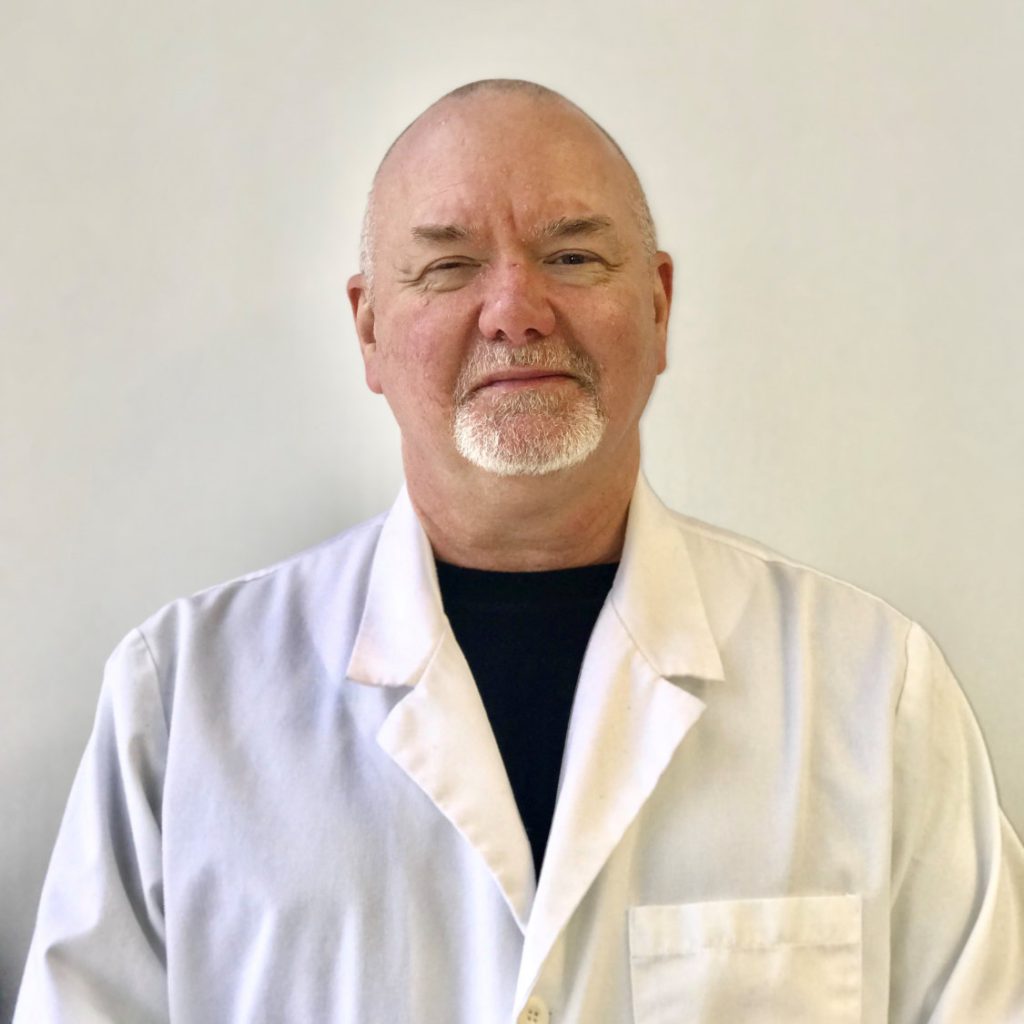
Robert Cecil, LAc - Robert has a passion for healing and a talent for orthopedic and neurological issues. He works with a lot of our veteran patients addressing a diverse range of conditions from chronic pain to neuropathy to PTSD. In addition, his experience with Frequency Specific Microcurrent and Estim scar release techniques provides additional healing modalities in addition to acupuncture.

Fielding Carroll, LAc - For those dealing with chronic digestive disorders such as Chrohns and IBS, Fielding has developed a unique approach combining personalized nutritional therapy with acupuncture to help people radically change their digestive health. Patients report relief from decades-long issues after only a handful of treatments. He is also skilled in Soliman’s Auricular Allergy Treatment (SAAT), offering significant allergy relief from conditions like Alpha-Gal.
Our newest member, Jason Macko, LAc is trained in the 5 element technique, offering a gentle and integrated approach to complex conditions. In addition, he will be part of our team offering SAAT for Alpha Gal and other allergies. He is passionate about helping athletes optimize their performance and recover quickly from injuries. He is also skilled at handling complex cases and helping people reach optimal health.
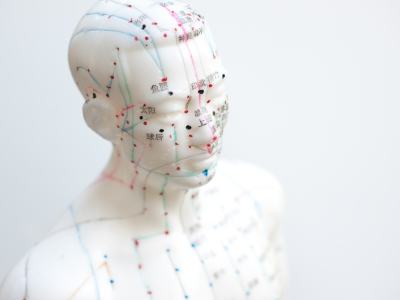
Together, we offer a wide range of expertise and services to address the mental and physical well-being of our patients. Considering acupuncture as part of your healthcare regimen can be a transformative step toward holistic wellness! By seeking the expertise of a skilled acupuncturist, you embark on a journey to balance and restore harmony within your body, mind, and spirit. Whether you're seeking relief from pain, stress reduction, chronic issues, or overall health improvement, acupuncture offers a gentle yet effective approach rooted in ancient wisdom.
Your path to optimal health starts with a visit to an acupuncturist—discover the profound healing potential of acupuncture today!
Yours in Health,
Jenny-Marie Greenough, LAc
Parasites?!?
This is something I’ve heard more frequently in-clinic these days—thanks to TikTok and Instagram gurus peddling everything from DIY remedies to thousands of dollars in “high-end” treatments. Most begin with:
“OK, so you are feeling tired, unfocused, having headaches, joint pain, depression, anxiety, cravings, skin rashes, (or any other common symptoms)?”
And then there’s a dramatic story, usually about passing lots of WORMS, and being told to just drink this tonic, take this pill, or book a “clearing session” for $5,000 and get rid of those parasites….Yes, I know—I sound pretty jaded right here!
Over the last 10 years, the same techniques have spotlighted candida infections, SIBO, Chronic Fatigue Syndrome, and other disorders that have a range of symptoms and are difficult to meaningfully diagnose. Worse, these are symptoms can be applied to almost anyone and billions of dollars in products have been sold and relatively few of those purchasers helped. When it comes to parasites, many of the popularly recommended herbs can be toxic unless used with very careful guidance. Just because you can buy it over the counter doesn’t mean it is without risk. Tylenol is safe if taken as directed but not as safe for people drinking alcohol and deadly if too much is taken. The same can be true of many anti-parasitic herbs! At higher doses, if taken too long or if combined with prescription or over-the-counter medications, they can cause more harm than good.
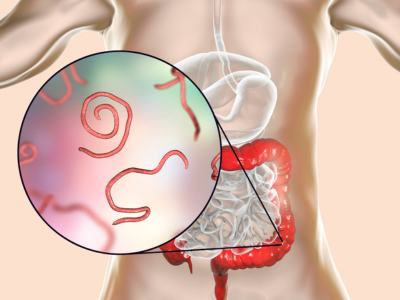
On the other hand, yes, parasites absolutely can be an issue. And yes, biomedical doctors in the US largely ignore this possible cause of disease in anyone over the age of 8 (pinworms are widely treated and addressed in small children). But for adults complaining of passing tapeworms or having any other clear signs of parasites, it’s virtually impossible to find a doctor who will do a stool test even to see what parasites might be there. The eggs of many parasites are visible with a simple microscope and easily identified—and yet finding someone to do this is nearly impossible. I understand the patient's frustrations and certainly have worked with herbs to help people with parasites. If you have traveled abroad, eaten sushi or undercooked meats or eggs, walked barefoot in the dirt, eaten unwashed produce, or routinely handled animals, you have potential risk factors for parasites.
To be effective in clearing parasites it helps to know what you are dealing with so you can address the lifecycle and target not only the current adults, but any emerging adults that may be coming from eggs (depending on the parasite, some reproduce in humans and others don’t). It also helps to know the starting parasite load—but for all the reasons listed above this usually isn’t an option unless you’ve seen visual evidence of parasites in your stool. So what to do?

If you suspect parasites—I recommend consulting with an experienced herbalist or provider. There’s a wealth of information out there but much of what is out there is incomplete. Don’t go it alone. For those determined to forge their way without guidance I can recommend some safe products but if the results aren’t what you want, seek help. It’s also possible that your root cause is not parasites and a professional can help assess your whole health state.
Additionally, if you take medications or other supplements a skilled provider can help prevent accidental toxicity from combining herbs and medications or supplements. Don’t overdo it! If you have done your own cleanse 2-3 times and still have problems—you need help!
Receiving proper treatment for parasitic infections is crucial for safeguarding your health and well-being. Effective parasite treatment not only eliminates harmful organisms from your body but also prevents potential complications with long-term health issues, as well as ruling out other potential illnesses, and preventing incorrect treatment. By seeking appropriate medical care and following recommended treatment protocols, you can restore your body's balance and ensure optimal health!
As March unfolds and St. Patrick’s Day festivities commence, amidst the choice of a pint for many, it's important to pause and address the topic of liver health. The liver has many roles in the body:
As a result of these key functions, liver dysfunction can have a cascade of effects including:
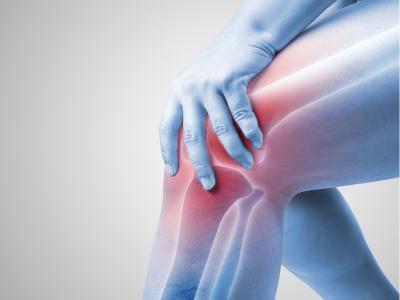
Is that last one a surprise to you? It was to me! I was listening to a podcast on kissing spine— an arthritic condition in horses that has become more prevalent. The discussion went to findings in dissections of horses with kissing spine showing bone level bruising throughout the body AND liver pathologies, and that further, when horses with kissing spine were given liver supportive treatments, the disease progression slowed dramatically or even stopped. So I had to dig deeper—was there research into the role of liver dysfunction in arthritis in people? And the answer was a resounding yes.
Now in classical biomedical standards, the liver is not considered diseased until it’s near failure— jaundice, ascites, major problems...but there is also a clear association in the literature between hepatitis B infections and arthritis. So why wouldn’t earlier-stage liver issues from other causes have the potential to cause joint and bone changes? The research certainly points that way. Given all the things our liver does for us, I’ve had a change in perspective. With the abundance of liver-supportive herbs available to us that are safe, why not just plan on a quarterly liver cleanse to help keep that lovely organ happy and healthy?
*If you take supplements, herbs, or prescription medications—do review this protocol with your health care provider or herbalist*

Do keep in mind—all the cleanses and tonics in the world won’t be able to make up for a poor diet! So on a daily basis, remember that your food and drink choices matter! Sugar, alcohol, and junk food add a strain to your liver. Herbal teas, nutrient-rich veggies, and fruits support your liver.
On a daily basis the following herbs can gently support your liver and blood:
In terms of a safe liver cleanse, MediHerb has some lovely herbal complexes to both cleanse and support the liver. So every quarter, I recommend the following protocol: Raja Wellness Quarterly Liver Cleanse
Starting the cleanse with LivCo around the full moon taps into the clearing energy of this celestial body (stay tuned next month where I discuss parasite cleanses and the pull of the full moon for more details). Then take a break for a few days and start the “tonifying” phase with Livton to support the liver as the energy of the new moon helps guide the herbs into a building phase. For most people, doing this 4 times per year will be sufficient. If you don’t regularly take prescription medications, aren’t drinking alcohol on a weekly or daily basis, get plenty of exercise, and manage your stress—then 1-2x per year will be plenty for this cleanse.
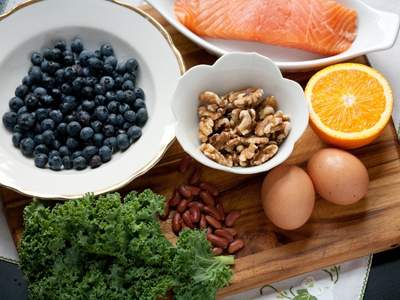
In addition to the herbs, I recommend following a liver-friendly diet rich in plant-based proteins, vegetables, and some high-quality fish in addition to nuts, olive oil, and fruits. There is a multitude of research into nutrition for longevity, reduced disease, and health. The common theme among these findings is: to eat a diet high in vegetables, plant-based proteins, and whole grains with small amounts of fruits, grains, and animal proteins. Olive oil, coconut oil, and nuts all have protective properties for the brain and liver. As Jack Lalanne used to say “The longer the shelf life, the shorter your life”. Those handy packaged “foods” are often no longer actual food but merely a food-like product!
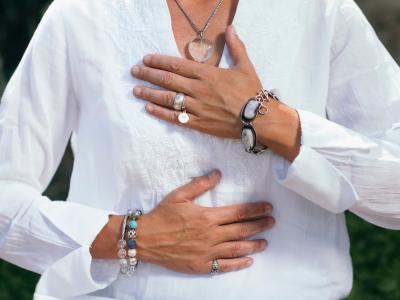
Stress and psychological factors have a direct impact on the function of the liver. The more you can regulate stress through lifestyle and exercise, the better the liver will function. In Traditional Chinese Medicine, the liver is represented by the wood element—spring is the time of liver growth with new growth reaching and bending to new heights. A healthy wood element is flexible like the young tree, bending with the wind rather than breaking. The color associated with the liver is green and stones like peridot and malachite can support liver function. And yes, regular acupuncture has been shown to reduce stress and increase overall health- even for healthy patients a quarterly “tune-up” with your acupuncturist can keep new problems from emerging. For patients with a high-stress life or who engage in intense physical training- monthly sessions help keep problems at bay.
Why are we so passionate about mental health at Raja Wellness?
The link between mental health and cardiovascular health is quite significant. Stress, especially chronic psychological stress, has a profound impact on the cardiovascular system. When the “stress response” is activated, the body secretes glucocorticoids, epinephrine, and other hormones, while inhibiting the secretion of growth hormone, insulin, and reproductive hormones. The sympathetic nervous system is also activated, leading to increased heart rate and blood pressure, among other physiological changes that divert blood to areas needed for immediate survival, such as the muscles and lungs, and away from non-essential areas like the gut and reproductive organs. This response is adaptive in the short term, but chronic activation due to chronic stress can lead to serious cardiovascular issues such as hypertension, atherosclerosis, and myocardial ischemia.
This connection between mental health and cardiovascular health highlights the intricate intertwining of psychological and physiological factors. The body's response to chronic stress can have detrimental effects on the cardiovascular system, emphasizing the importance of managing and addressing mental health to promote overall well-being, including cardiovascular health.

Acupuncture has many benefits for cardiovascular health:
1. Stress Reduction: Stress is a known risk factor for cardiovascular diseases. Acupuncture has been shown to modulate the body's stress response, potentially reducing the impact of stress on the heart and blood vessels.
2. Blood Pressure Regulation: Studies indicate that acupuncture may help in regulating blood pressure. By targeting specific acupuncture points, practitioners aim to optimize blood circulation and blood pressure levels, contributing to better cardiovascular function.
3. Inflammation Management: Chronic inflammation is closely linked to cardiovascular conditions. Acupuncture may exert anti-inflammatory effects, potentially reducing the systemic inflammation associated with heart disease.
4. Enhanced Circulation: The stimulation of acupuncture points is believed to enhance microcirculation, improving blood flow to vital organs including the heart. Enhanced circulation can promote heart health and overall cardiovascular function.
5. Complementary Therapy: Acupuncture is often used as a complementary therapy alongside conventional medical treatments for cardiovascular issues. It may help alleviate symptoms, improve overall well-being, and enhance the effects of standard cardiovascular care.
While acupuncture has clear benefits for cardiovascular health, we recommend individuals consult healthcare professionals before integrating acupuncture into their treatment regimen. Moreover, acupuncture alone may not be enough for people dealing with chronic stress.
Learning to manage our stress is a key part of maintaining heart health—and that’s where professional mental health care is so important as part of your overall wellness.
Herbal formulas also play an important role in heart health. Many formulas have been shown to reduce cholesterol and blood lipid levels, decrease inflammation, and increase peripheral circulation. For example, Clear Mind Formula is one of my favorite herbal formulas for heart health, especially here in Kentucky because of its natural antifungal and antimicrobial properties. This is a raw herbal concoction that we make in-house. We do recommend consulting with a trained herbalist before incorporating any herbal remedies into your care plan.
or
For more information, please don’t hesitate to call us at 270-506-3853 today!
References:
1. Wayne PM, Kaptchuk TJ. Challenges inherent to t'ai chi research: part II-defining the intervention and optimal study design. Journal of Alternative and Complementary Medicine. 2008;14(2):191-197.
2. Fu, C., Zhao, N., & Liu, Z. (2013). Chronic pain: acupuncture and related therapies. Springer Science & Business Media
3. Chen J, Ye C, Yang Z, Zhang C, Li P, Xu B, Wu A, Zhang X, Xue X. Erchen decoction to reduce oxidative stress in dyslipidemia phlegm-dampness retention syndrome mice: In vivo mechanism revealed by metabolomics (liquid chromatography-mass spectrometry). Phytomedicine. 2023 Jul;115:154808. doi: 10.1016/j.phymed.2023.154808.
Acupuncture has gained popularity recently for its benefits in improving immune system function. This holistic approach involves the insertion of thin needles into specific points on the body to stimulate energy flow and restore balance. While acupuncture is commonly known for its effectiveness in pain management, it also offers numerous advantages for boosting the immune system.
One of the primary benefits of acupuncture is its ability to reduce stress levels. Stress has a significant impact on the immune system, weakening its response to pathogens and increasing the risk of illness. Acupuncture helps to regulate the body's stress response by promoting the release of endorphins, which are natural painkillers and mood enhancers. This, in turn, reduces stress and anxiety, allowing the immune system to function optimally!
Furthermore, acupuncture has been found to enhance the production of immune cells, such as natural killer cells, which play a crucial role in defending the body against viruses and cancer cells. A study published in the Journal of Traditional Chinese Medicine found that acupuncture increased the activity of natural killer cells, suggesting its potential to improve immune system function.
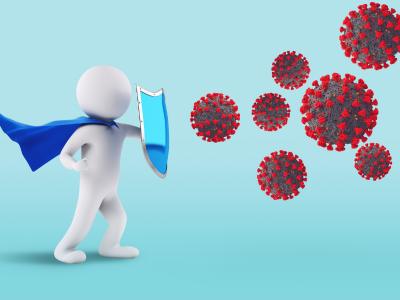
In addition to boosting immune cell production, acupuncture also improves circulation. The flow of blood and lymphatic fluid is essential for the proper functioning of the immune system, as it helps transport immune cells and nutrients throughout the body. By stimulating specific acupuncture points, blood circulation is enhanced, allowing immune cells to reach their destinations more efficiently.
Moreover, acupuncture has been shown to regulate inflammation, a key factor in immune system function. Chronic inflammation can impair immune responses and lead to various health conditions. Research published in the Journal of Neuroimmunology demonstrated that acupuncture can modulate the production of inflammatory cytokines, reducing inflammation and promoting a balanced immune response.
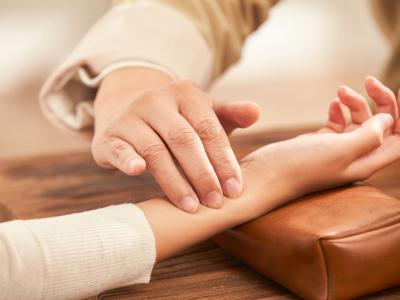
In addition to the benefits above, acupuncture has been known to also assist with other things that may contribute to improved immune function:
Balancing Energy Flow (Qi): According to traditional Chinese medicine theory, acupuncture helps balance the flow of vital energy, or "Qi," through the body's meridians. When Qi flows smoothly, it is believed to support overall health, including immune function.
Stimulating Lymphatic Flow: The lymphatic system plays a crucial role in the immune response by filtering out toxins and waste products. Acupuncture may help stimulate lymphatic flow, aiding in the removal of these substances.
Improving Sleep Quality: Quality sleep is essential for a healthy immune system. Acupuncture may help improve sleep patterns and address conditions like insomnia or sleep disturbances that can weaken the immune system.
Supporting Organ Function: Acupuncture is believed to influence the function of specific organs, which can indirectly impact immune health. For example, the spleen is considered important for immune function in traditional Chinese medicine, and acupuncture may be used to support its function.
It is important to note that acupuncture should not be considered a standalone treatment for immune system disorders or diseases. It is most effective as a complementary therapy alongside conventional medical treatments. Consulting with a qualified acupuncturist and healthcare professional is crucial to ensure a comprehensive and personalized approach to immune system support while supporting your specific needs and goals.
Book an appointment HERE with one of our highly qualified Acupuncturists today!
References:
1. National Library of Medicine: Acupuncture and Immunity
In honor of Father’s Day, I wanted to take this opportunity to highlight how acupuncture and TCM helps men’s health; and to remind men that they need to take care of themselves too. Statistically men are less likely than women to seek health care and married men tend to see the doctor more often than single men, but still less often than women (even accounting for pregnancy needs). One of the biggest complaints I hear from male patients is they are too busy or they don’t want to walk out with another pill to take.
I started this with a search of “top reasons men go to the doctor” and could only find research and articles on why men should go to the doctor—it seems we haven’t really looked at why they do go when they do in much detail. I did find this gem from The Cleveland Clinic and their support of the MENtion It Campaign—an initiative to encourage men to seek care. Despite the fact that the majority of men want better health to care for their families, less than half of those who listed that as a priorit, seek regular care.
The top reasons why? They don’t want to know they have to make a lifestyle change, or fear of finding out what they have. We get it—but there are better options than neglecting your health. And if you don’t want to take a pill when things are going wrong, yes, you will need to make a change. But aren’t you and your family worth it? So if you have an issue—MENtion It! We are here to listen.
One advantage acupuncture has over other options is we treat the whole body during a session—you may be coming in for back pain or knee pain, but we will also be addressing sleep, digestion, immune function, endocrine balance and more. If you think about it, it is truly a great value! Similarly, our approach using herbal formulas is to select a formula that addresses as many issues at once as possible—so you can take one thing and have multiple issues get better. And unlike just treating a symptom, when we are able to get to the root of the problem, and as a result, you feel better and stay that way even without being on herbs all the time.
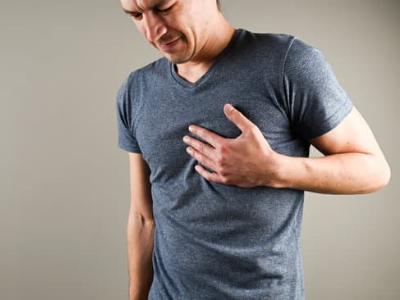
Menopause gets a lot of notice, but did you know men go through a similar process called Andropause? First written about in 1946, a landmark paper in JAMA entitled, “The Male Climacteric” characterized it with nervousness, reduced potency, decreased libido, irritability, fatigue, depression, memory problems, sleep disturbances, and hot flushes. Hypogonadism is broad scientific term and it refers to a “clinical syndrome caused by androgen deficiency, which may adversely affect multiple organ functions and quality of life.”1 Decreasing testosterone levels are linked to a number of disease processes and shorter life-span. The traditional approach is supplemental testosterone, but acupuncture and traditional East Asian herbal medicine have also been shown to regulate testosterone levels in the body, improve mood, sleep, endocrine function and cardiovascular health.
Speaking of hearth heath—statistically 1 in 4 men will die of heart disease and it’s complications. Men tend to develop heart disease earlier in life than women and are less likely to make the lifestyle changes necessary to reverse heart disease. Coronary artery disease is one of the most common forms of heart disease among men and responds incredibly well to lifestyle and diet changes. Tons of this research can be found here.
JAMA: Intensive Lifestyle Changes for Reversal of Coronary Heart Disease
If you made it this far into the article, congratulations! As a thank you for being loyal reader, use the code “mentionit” for 10% off you next order from our website. Discount code valid 6/15/23 - 7/15/23. Not valid with other offers, not valid for gift cards. Other restrictions may apply.
Did you know half of men who have heart attacks have no symptoms before it happens? Or perhaps, didn’t know they were having symptoms. One of the earliest signs of heart disease is erectile dysfunction. Another early sign of heart disease is new onset anxiety2. Mental health issues and heart disease are often tangled together and in many cases of anxiety being caused by low grade (not yet detectable) heart disease, the typical anxiety medications don’t work well. Acupuncture is very effective for both mental health and cardiovascular health—and as we mentioned above, can address both issues in the same sessions!
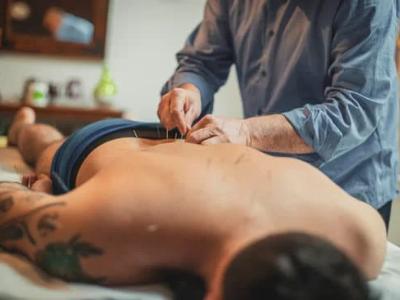
Last, but not least is prostate health. Benign Prostate Hyperplasia responds very well to acupuncture and herbal therapies3. Acupuncture can increase urinary output, reduce the size of the prostate, and beyond hyperplasia is effective for treating Prostatitis as well.
Harvard Study on Acupuncture Relieving Prostatitis Symptoms
These results tend to be long-lasting after the initial course of treatment. Prostatitis alone is responsible for over 2 million doctors visits a year, and is often recurring and has no clear cause. So even if we can’t convince you to see your doctor once a year (yet), schedule an appointment with one of our acupuncturists, check out our online resources, and remember—Dads are an important part of the family and it’s important they get the care they need so they can take care of others!
1 Singh P. Andropause: Current concepts. Indian J Endocrinol Metab. 2013 Dec;17(Suppl 3):S621-9. doi: 10.4103/2230-8210.123552. PMID: 24910824; PMCID: PMC4046605.
2 Celano CM, Daunis DJ, Lokko HN, Campbell KA, Huffman JC. Anxiety Disorders and Cardiovascular Disease. Curr Psychiatry Rep. 2016 Nov;18(11):101. doi: 10.1007/s11920-016-0739-5. PMID: 27671918; PMCID: PMC5149447.
3 Zhang W, Ma L, Bauer BA, Liu Z, Lu Y. Acupuncture for benign prostatic hyperplasia: A systematic review and meta-analysis. PLoS One. 2017 Apr 4;12(4):e0174586. doi: 10.1371/journal.pone.0174586. PMID: 28376120; PMCID: PMC5380320.